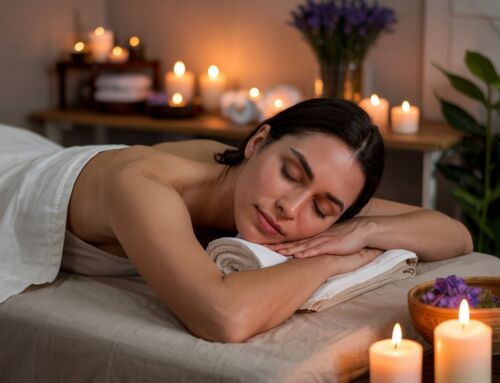Welcome to your journey towards a more flexible and healthier back! The importance of back flexibility cannot be overstated. Not only does it play a crucial role in our daily movements, but maintaining a flexible back is also key to preventing discomfort and injury. Regularly practicing the right stretches can significantly alleviate lower back pain, improve your range of motion, and enhance overall back health. This guide is designed to introduce you to a series of stretches and exercises specifically curated to strengthen your back, promote flexibility, and help you enjoy a more active, pain-free life. Let’s embark on this path to better back health together!
Understanding Back Health
A healthy back is foundational to our everyday activities, from sitting at a desk to engaging in physical exercise. It supports the body, allows a wide range of motion, and plays a key role in our overall well-being. Unfortunately, back pain and stiffness are common, often stemming from various causes. These can include poor posture, especially in an era of increased screen time; muscle imbalances, where tight or weak muscles contribute to discomfort; and sedentary lifestyles that limit the back’s natural movement and flexibility. Additionally, factors like stress, improper lifting techniques, and underlying health conditions can also lead to back pain. Understanding these causes is the first step in taking proactive measures to maintain or improve back health.
The Impact of Tight Glutes and Hamstrings on Lower Back Pain
Tight hips and hamstrings are often overlooked contributors to lower back pain. When these muscle groups are stiff, they can create an imbalance in the body, leading to increased strain on the lower back. For example, tight hip flexors can tilt the pelvis forward, causing excessive curvature of the lower spine (lordosis). Similarly, shortened hamstrings limit hip extension and can lead to a posterior pelvic tilt, flattening the lower back and leading to discomfort. Addressing tightness in these areas through targeted stretches and exercises can significantly alleviate lower back stress, improving posture and reducing the risk of pain.
Weak Glutes and Lower Back Pain
Weak glute muscles can also significantly contribute to lower back pain. The glutes are key stabilizers of the pelvis and play a vital role in maintaining proper posture and alignment. When they are weak, other muscles, including those in the lower back, have to compensate, often leading to overuse and pain. Strengthening the glutes through specific exercises can help in evenly distributing the body’s load, reducing the strain on the lower back, and thus alleviating associated discomfort.
Pre-Stretch Guidelines
Before diving into stretching exercises, it’s important to follow these guidelines for safe and effective practice:
- Warm-Up: Engage in a light warm-up to increase blood flow to the muscles. This could be a brisk walk or a few minutes of gentle jogging in place.
- Gentle Approach: Start with gentle stretches, gradually increasing intensity. Avoid bouncing or jerky movements to prevent muscle strain.
- Listen to Your Body: Pay attention to your body’s signals. Stretching should cause a feeling of mild tension, not pain. If a stretch hurts, ease up.
- Consistency Over Intensity: Regular, moderate stretching is more beneficial than infrequent, intense sessions.
- Breathing: Maintain normal, steady breathing during stretches. Holding your breath can increase tension in your muscles.
- Consulting Professionals: If you have a history of chronic back pain, injuries, or other health conditions, consult a healthcare professional like a physical therapist before starting a new stretching routine. They can provide personalized advice and modifications tailored to your needs.
The Best Back Stretches
Cat-Cow Stretch
The Cat-Cow Stretch is a gentle and effective exercise for increasing flexibility and easing tension in the spine and neck. It involves getting on your hands and knees and alternately arching and rounding your back. As you inhale, you drop your belly towards the floor, lifting your head and tailbone upwards (Cow Pose). As you exhale, you round your spine upwards, tucking your chin to your chest and drawing your belly to your spine (Cat Pose). This stretch is excellent for improving spinal flexibility and can help relieve tension in the back muscles. [also check out this guide to help lower back pain]
Childs Pose
Child’s Pose, a classic yoga stretch, is highly effective for releasing tension in the lower back muscles and promoting relaxation. To perform this stretch, start by kneeling on a mat, then sit back on your heels and fold forward, extending your arms in front of you. Rest your forehead on the mat, allowing your entire body to relax. This pose gently stretches the spine, hips, and thighs, and can be particularly soothing for tight lower back muscles. It’s a great way to relieve stress and improve back flexibility, making it a staple in routines focused on lower back health. [relieve back pain]
Knee-to-Chest Stretch
The Knee-to-Chest Stretch is a simple yet effective exercise for easing lower back pain and improving flexibility in the lower back muscles. To perform it, lie on your back with your knees bent and feet flat on the ground. Gently pull one knee up towards your chest, using your hands, while keeping the other foot flat. Hold the position for a few seconds to stretch the lower back and hip area, then switch to the other leg. This stretch is particularly beneficial for releasing tension in the lumbar spine and can be easily integrated into any daily stretching routine.







